Revival of Removable Batteries: Can This Dutch Company's "Eco-Friendly Phone" Deliver?
![]() 07/02 2025
07/02 2025
![]() 674
674
Removable batteries will ultimately be a niche choice for a select few.
Do you recall the EU's proposal to mandate the use of removable batteries in mobile phones through legislation?
Due to conflicting interests, this highly anticipated bill has been stalled for nearly two years, following years of negotiations, with no implementation in sight.

Apart from the tangled interests of phone manufacturers and suppliers, consumers also held mixed views on this bill.
Supporters generally believe that the primary reason for the high annual disposal of mobile phones is the limited battery life due to aging, coupled with the high cost of battery replacements through original after-sales services, rather than the inadequacy of phone performance.
Mandating removable batteries would not only save money but also reduce electronic waste.
However, there are indeed opponents.
Today, mobile phone batteries easily exceed 6000mAh, a progression facilitated by the integrated design of non-replaceable batteries. This integrated structure not only accommodates ultra-large capacity batteries but also allows for slimmer, more aesthetically pleasing designs, significantly enhancing structural strength and waterproof performance.
In summary, both sides have valid arguments, and the regulation is currently pending. The next progress announcement is rumored to be in 2027.
Just as the EU cannot force actions, it cannot prevent them either.
Recently, Fairphone, a niche European and American manufacturer focused on environmental protection, modularity, and ease of repair, officially launched its sixth-generation phone, the Fairphone 6, in Europe, priced at 599 euros (approximately 5033.61 yuan based on current exchange rates).
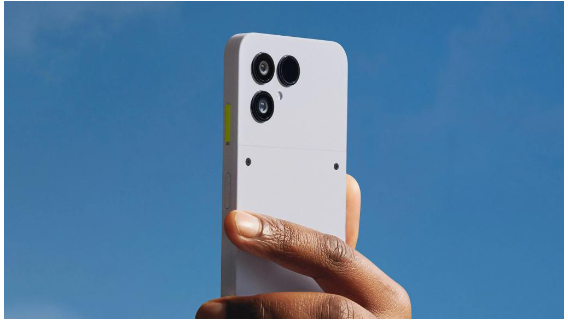
(Image source: Lei Technology)
That's right!
In addition to allowing users to replace all phone parts themselves, the product's biggest selling point is the ability to quickly restore battery power by removing and replacing the battery.
Could the days of popping open the back cover to replace a dead battery and being fully charged in less than half a minute be returning?
Eco-Friendly but Low-Spec
Before we proceed, let me introduce Fairphone.
Fairphone is a Dutch mobile phone manufacturer committed to promoting a fairer and more sustainable electronics industry.
Naturally, their products are called Fairphones.

(Image source: Lei Technology)
Since 2013, they have launched new products every 2-3 years. Over the past decade, each generation has adopted a modular, easy-to-repair design, albeit with product specifications that don't match their price.
In summary, the Fairphone 6 still fits the stereotype of being "eco-friendly but low-spec" in terms of hardware:
First, let's look at the core specifications: a Snapdragon 7s Gen3 processor, with 8GB of RAM and 256GB of storage as standard.
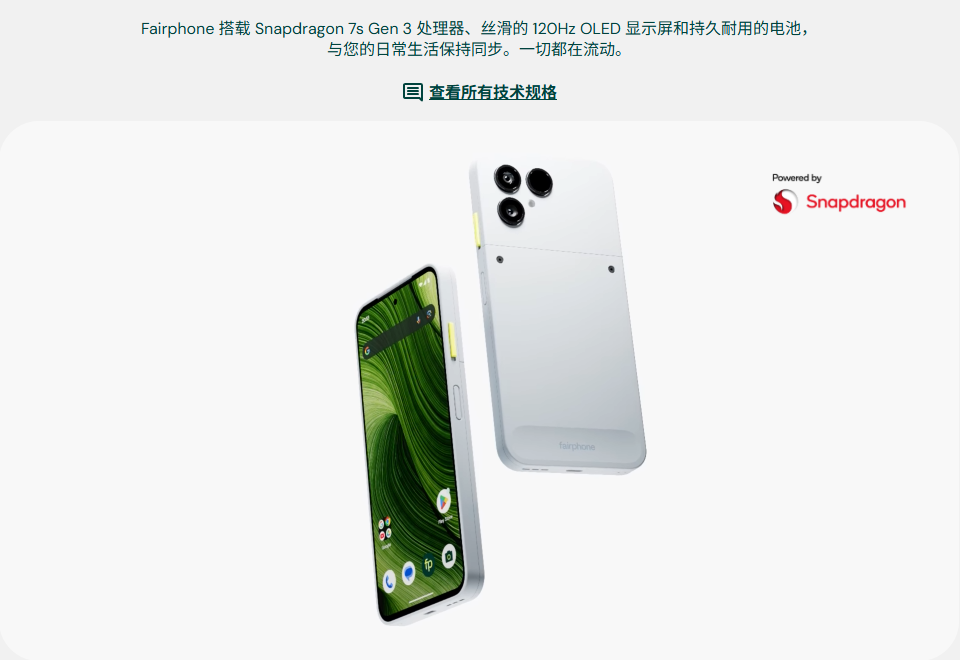
(Image source: Lei Technology)
Some readers may not be familiar with this processor. Its notable products in the domestic market are the Redmi Note 14 Pro+ and realme 14 Pro+. You can consider it as a variant of the Snapdragon 778G.
It can run games like PUBG Mobile smoothly but struggles with more demanding applications.
The front features a 6.31-inch LTPO OLED screen with 1.5K resolution and support for a 10-120Hz adaptive refresh rate.
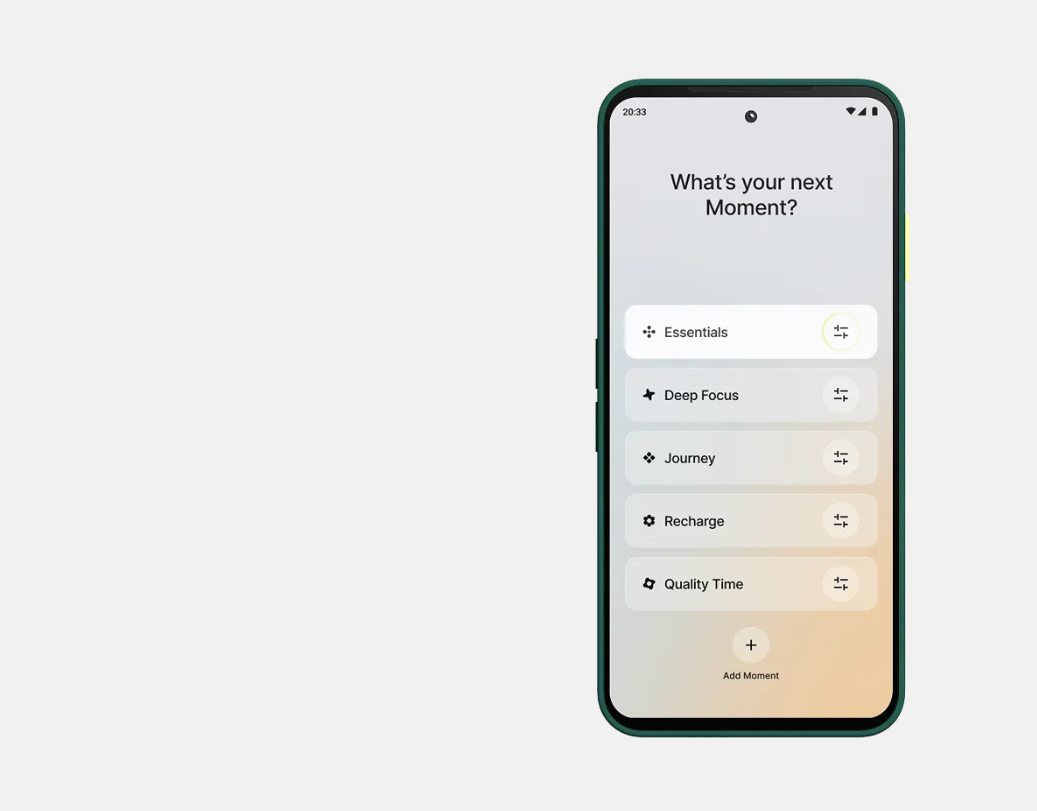
(Image source: Lei Technology)
On the back, we see the familiar triangular camera module design. This time, Fairphone has added lines to the back cover, giving it a design similar to the CMF phone 1. The back cover can be freely disassembled and repaired, and replaced with a multi-functional back cover with a card holder or strap.
The camera setup is also unremarkable, with a 50MP LYT-700 main camera and a 13MP ultra-wide-angle camera.
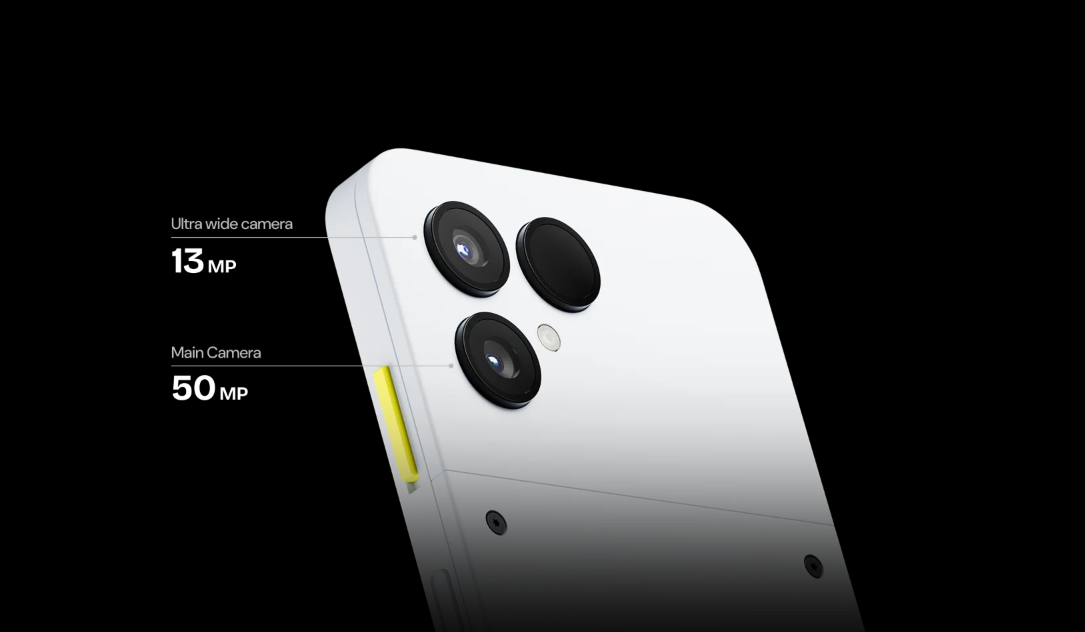
(Image source: Lei Technology)
Compared to domestic manufacturers, this would probably be the imaging level of a mid-range performance phone. However, the minimalist module design looks quite sleek.
Of course, the biggest selling point of the Fairphone 6 is still its removable design.
The removal method is simple: remove two screws and press down on the back cover to pull it off.
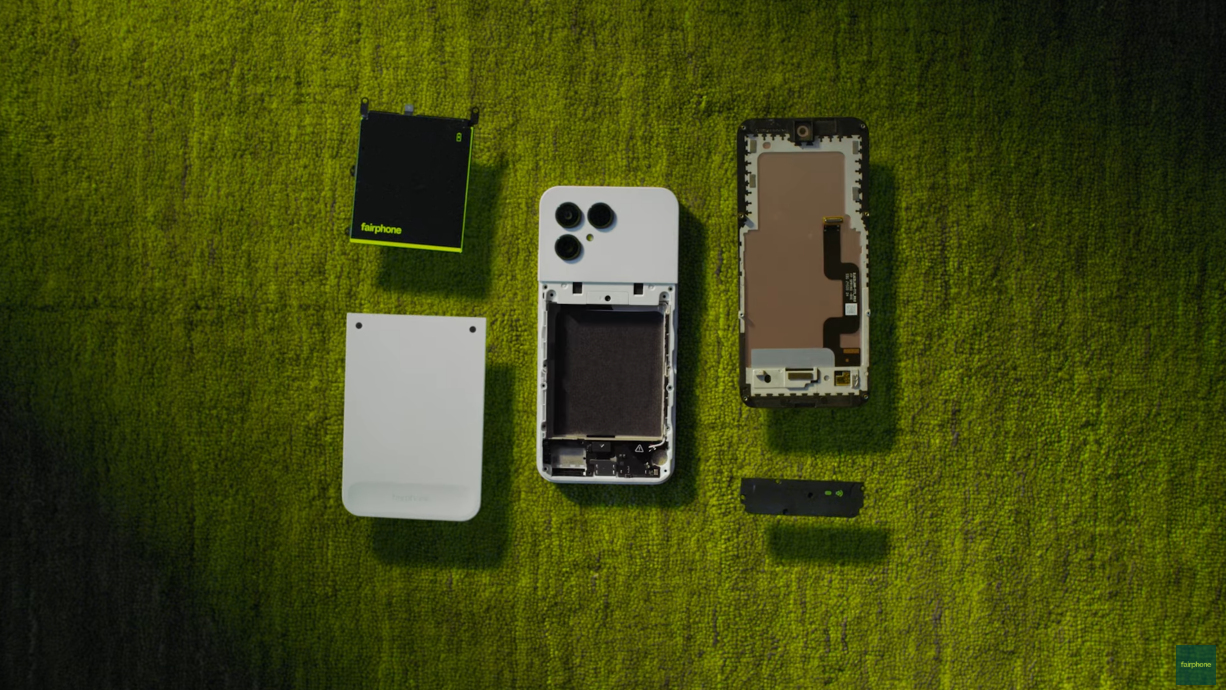
(Image source: Lei Technology)
Just like those old Nokias, the back cover comes right off!
Inside the phone body is a 4415mAh removable battery, with an official claim of up to 53 hours of battery life.
However, based on my experience, even with the Snapdragon 7s Gen3's energy efficiency, the battery will last at most 6 hours daily.
It's worth mentioning that unlike old Nokias, this battery is not fixed with simple contacts and latches but with screws and a ribbon cable.
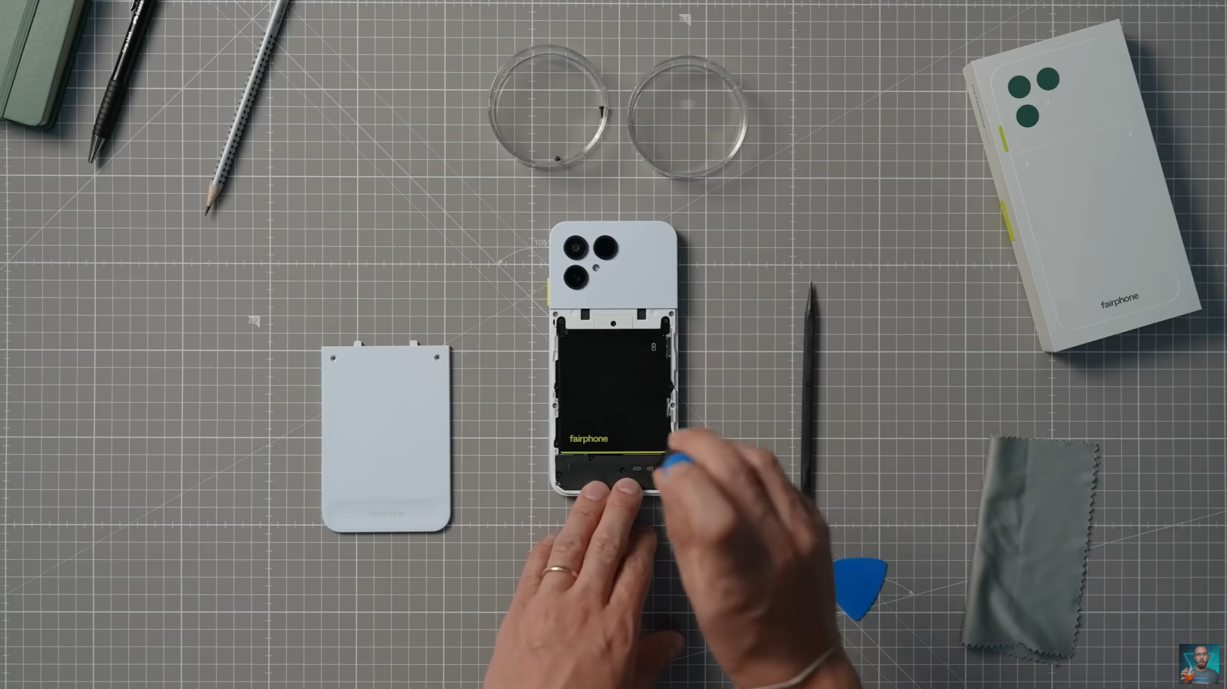
(Image source: Lei Technology)
In other words, the instant battery replacement by simply removing and reinstalling it is not possible with this phone.
However, with the right tools, you can disassemble the phone, unscrew six screws, pry open the ribbon cable, and replace it with a new battery in just two or three minutes.
With enough practice, you can even shorten the entire process to less than a minute.
If we convert this to energy replenishment, to fully charge a 4415mAh battery in 1 minute (based on a nominal voltage of 3.8V), the average charging power output per minute would be approximately 1006.62W (this is the effective power delivered to the battery). Considering the charger output, it would need to be even higher, exceeding 1100W.

What's the big deal about hundred-watt fast charging? To Fairphone, it's just a drop in the bucket.
Why Did Removable Batteries Fall Out of Favor?
Looking back, the history of smartphone development is one where removable batteries gradually exited the stage.
In the "feature phone" era, people often carried two mobile phone batteries, with a spare to use when the first one ran out.
In high school, since my Nokia 6300 could only last half a day when reading novels, I always carried at least two spare batteries. Every day, I would use a universal charger to rotate charging the three batteries, giving me a sense of satisfaction similar to organizing a magazine clip.
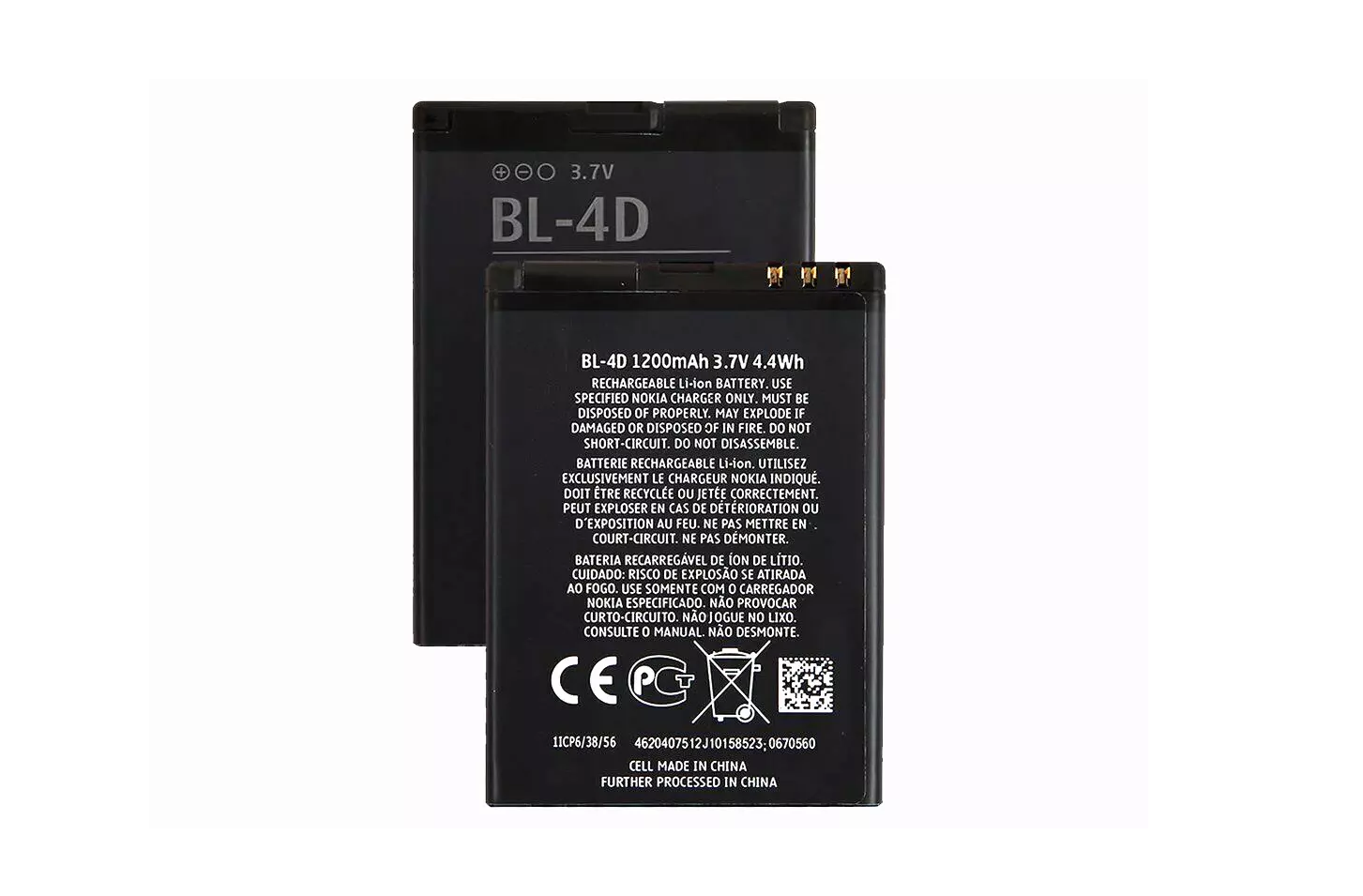
(Image source: Nokia)
Moreover, mobile phones of that era used nickel-metal hydride batteries. Due to the memory effect of batteries, it was common for people to deliberately "overcharge" their new phones to "activate" the battery capacity.
Whether this practice works or not remains a mystery to this day.
After the iPhone emerged, traditional removable batteries began to decline.
For smartphones, the large touchscreen ensures that their power consumption will be high. As smartphone technology advanced, processors and sensors became more powerful, necessitating a large-capacity yet thin and light battery.
Thus, lithium batteries officially took center stage.
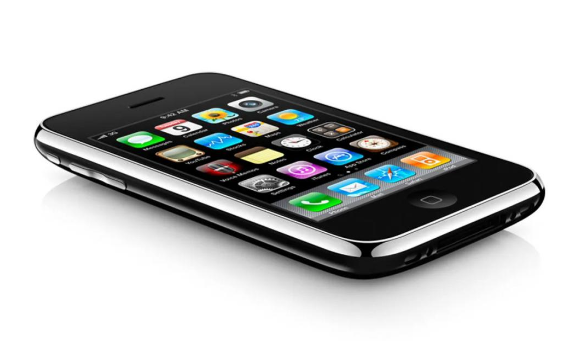
(Image source: Apple)
Compared to traditional mobile phone batteries, lithium batteries have many advantages: higher energy density, longer lifespan, and as soft-pack batteries, they only require an aluminum shell for packaging, which is less voluminous compared to the steel shell packaging of traditional nickel-metal hydride batteries.
But that's not all.
Apple turned its attention to the removable design. Removable batteries require mechanical structures, which are unacceptable for high-precision smartphones. As a result, lithium batteries were buried deep under metal casings that could not be easily opened.
As an industry leader, Apple's move was followed by many others.
Li Nan of Meizu once explained the non-removable battery of Meizu as follows:
"The design of removable battery covers, card slots, etc., takes up space, thereby reducing the actual battery capacity (using a removable battery in the same body as the MX2 would reduce the battery capacity by about 15%)."
Moreover, non-removable batteries inherently prevent the act of "opening the back cover," enhancing the phone's design integrity, making dustproof and waterproof performance more reliable, avoiding users from replacing mixed third-party batteries, improving safety, and reducing after-sales probabilities.
From any perspective, for mobile phone manufacturers, this is a choice with only benefits and no drawbacks.
Ultimately Only a Choice for a Minority
Whenever I occasionally get troubled by low battery, I miss the days of having a removable battery:
After all, no matter how fast the charging speed is, it's still not as quick as simply replacing the battery.
That being said, if you ask me if I would choose to buy a Fairphone 6 solely because of its removable battery design...

Sorry, but I have to decline.
First, the starting price of 5000 yuan for the 8+256GB version is discouraging. I only spent 4500 yuan on my current daily-use Xiaomi 15 with 16GB+1TB, and its product configuration is at least five times that of the Fairphone 6.
In the face of cold hardware parameters, some minor selling points appear pale and weak.
Secondly, the Fairphone 6 itself is not that convenient. You not only need to carry spare batteries but also an extra screwdriver. Moreover, I have to complain about the use of ribbon cables. Not only does frequent prying of ribbon cables lead to problems, but there's nowhere to charge the battery once it's removed.

(Image source: Lei Technology)
The ideal is full, but the reality is bony.
I can only say that in 2025, it's still impressive that a manufacturer can launch such a product to meet niche demands. I personally have a lot of respect for that.
I just wonder if domestic manufacturers would consider launching a similar product?
Source: Lei Technology
Images in this article are from: 123RF Licensed Image Library Source: Lei Technology







